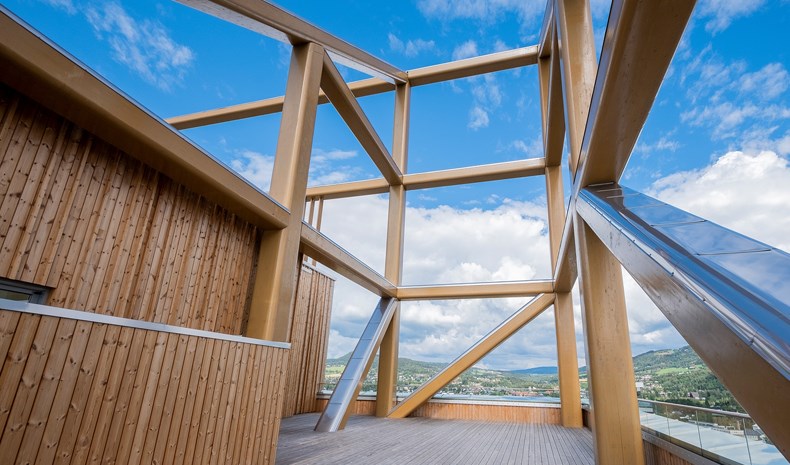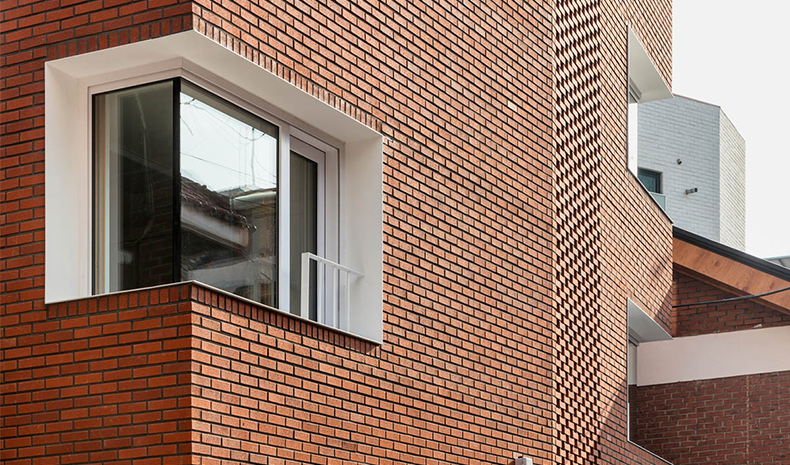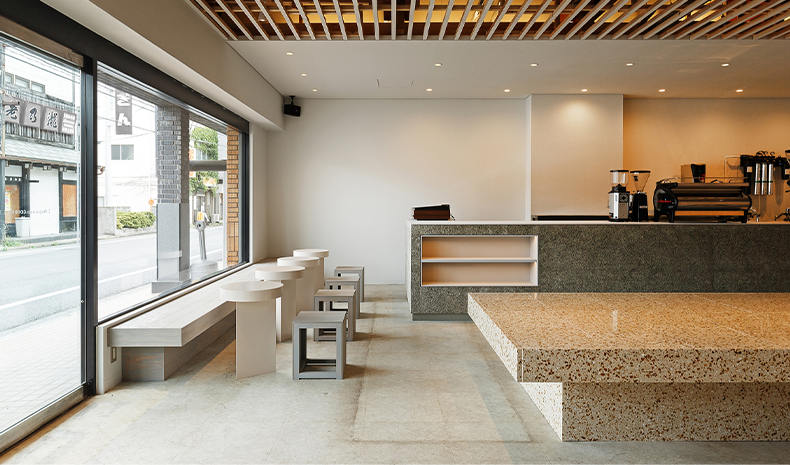Sustainability and environmental impact are always hot topics in architecture and design circles.
With all sorts of different claims and competing information from manufacturers, it can be difficult to decide what materials are best for sustainability purposes. What's even more difficult is reading in between the lines to understand what "sustainable" even means to different individuals.
In an effort to make it easier to identify materials that are widely considered to contribute to sustainable design, here's our list of 50 leading sustainable materials being used today in modern construction.
Contents:
2. Post-Consumer Recycled Materials
3. Natural Manufactured Materials
5. System-Based and Technology Materials
Natural Raw Materials
Natural raw materials refer to building materials that are derived from abundant natural sources, such as wood, stone, clay, and sand. These materials are often unprocessed or minimally processed and are used in construction for their durability and aesthetic appeal. To ensure their continued availability and minimize the impact on the environment, sustainable harvesting practices are key when sourcing these materials.
Bamboo
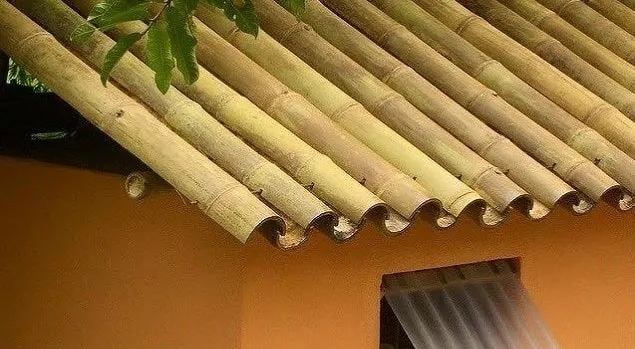
Image source: The Constructor
Bamboo is one of the fastest-growing crops and requires no fertilizer, so it does not contribute to greenhouse gasses. It also self-regenerates from its roots, which is advantageous as it does not have to be replanted. This is often compared to cotton cultivation, which requires a significant amount of pesticides, water, and labor.
Stone
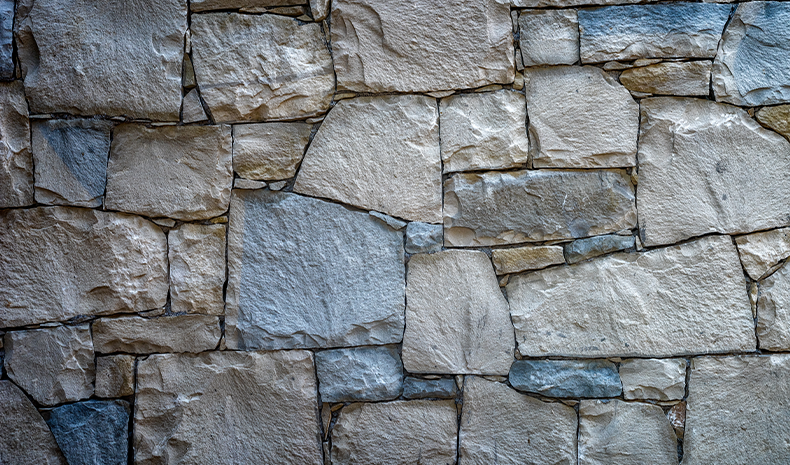
Image source: Unsplash
Stone is completely recyclable and can serve several different purposes like countertops and foundations. It is also eco-friendly and does not emit any toxic chemicals throughout the building.
Cork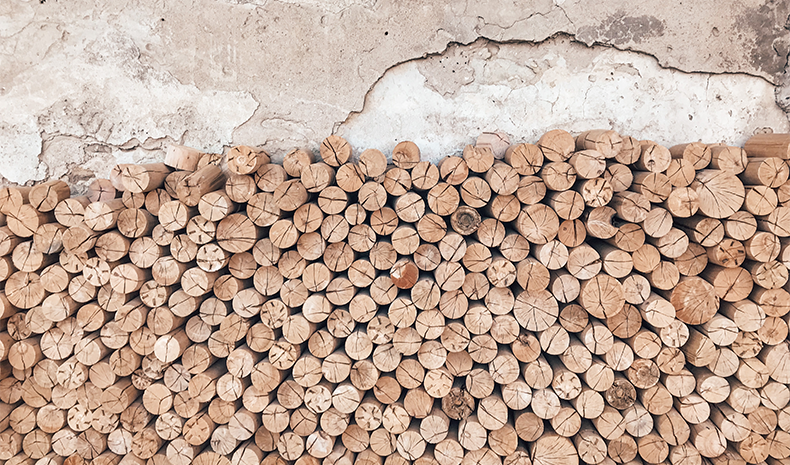
Image source: Unsplash
Biodegradable and renewable, cork is a better alternative to leather or plastic. Cork can be used for the insulation of homes and commercial buildings and is one of the lightest solid substances in weight.
Straw Bales
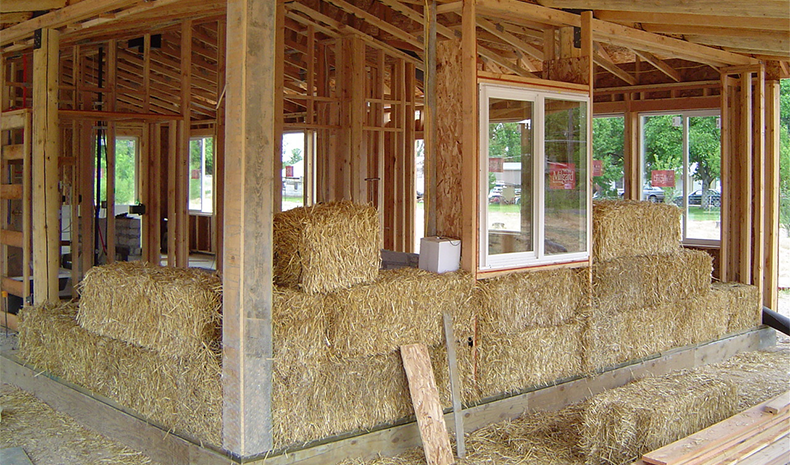
Image source: earthcraftconstruction.com
As an excellent use of insulation, straw bales save heating energy and are also biodegradable.
Sheep’s Wool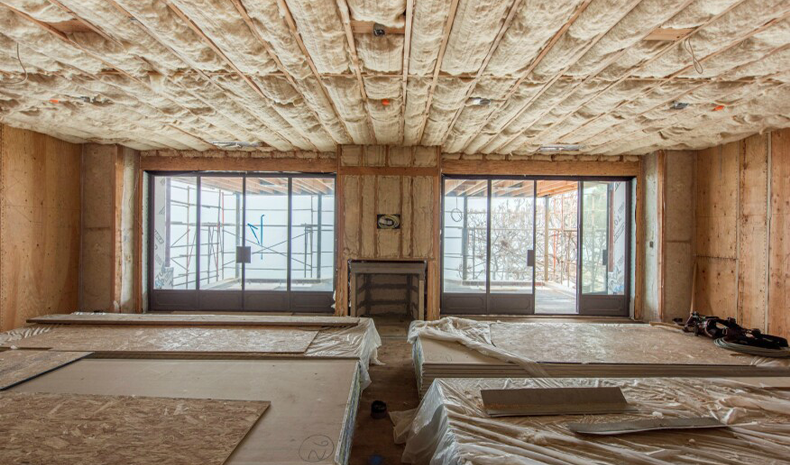
Image source: builderonline.com
Wool is known to be a natural insulator that has protected sheep from extreme weather for many years. The material is now being used for acoustic and thermal insulation as a sustainable insulator for homes and commercial buildings.
No heat is required since glues or other bonding agents are not necessary for production; therefore, wool has a low environmental impact.
Adobe Brick
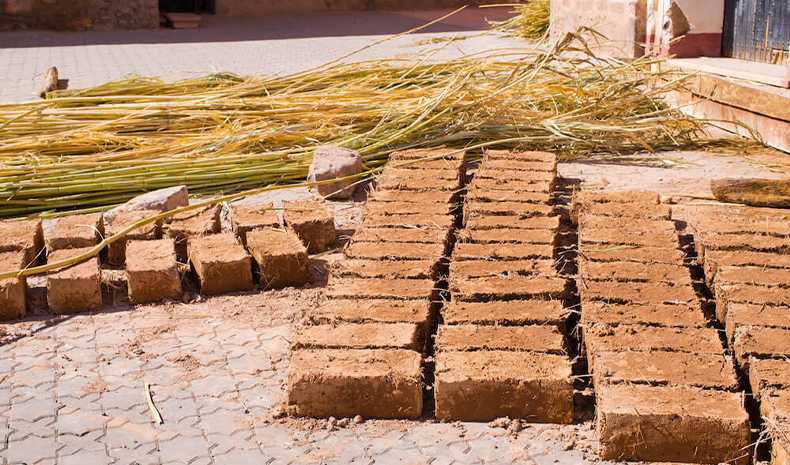
Image source: The Momentum
Adobe brick has a small impact on the environment, especially when materials are harvested locally. Homes built with adobe brick can last for centuries and keep energy costs to a minimum.
Terracotta
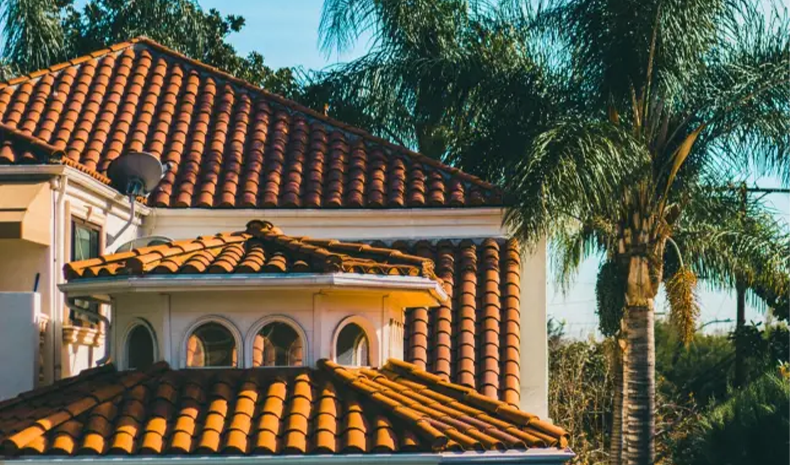
Image source: buildwithrise.com
Terracotta is 100% natural, does not use any harmful chemicals to produce, can be recycled, and is long-lasting, making it a perfect eco-friendly, sustainable material.
Post-Consumer Recycled Materials
Post-consumer recycled materials refer to building materials that are made from recycled materials that have been used by consumers and then recovered and processed for use in new products.
These materials are often used as an alternative to virgin materials in order to reduce the environmental impact of construction and promote sustainability.
Recycled Plastic
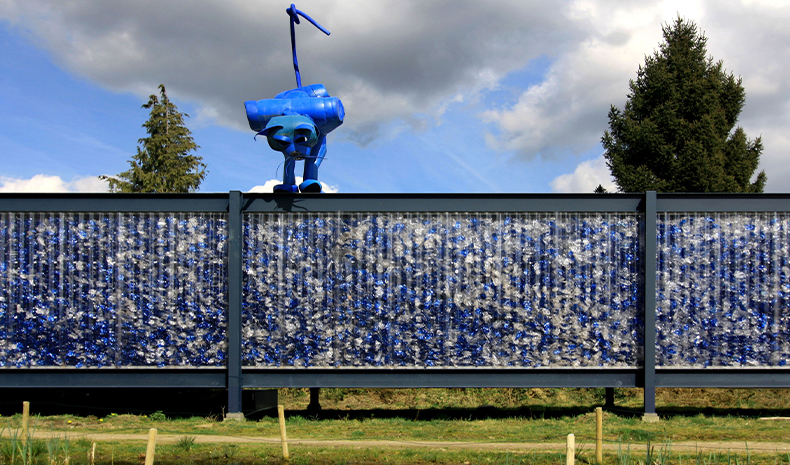
Image source: archdaily
Recycled plastic is resistant to weathering, so it requires less maintenance throughout its life.
Rammed Earth Tires
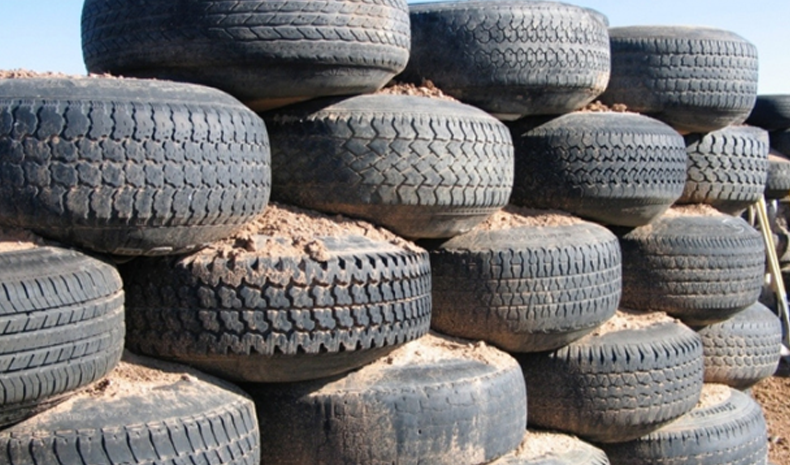
Image source: Pangea Builders
Rammed earth tires are made by filling recycled tires with compact soil to form rammed earth bricks to replace traditional wood framing in houses. By using soil, the home can regulate indoor temperature even in extreme conditions.
Reclaimed Wood
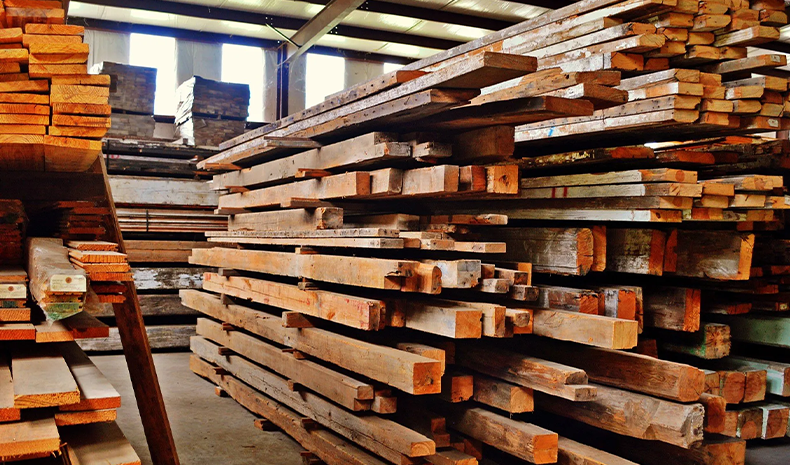
Image source: Albony Wood Works
Reclaimed wood is preferred over lumber because it fights the demand for newly sourced lumber and deforestation.
Shipping Container Scraps
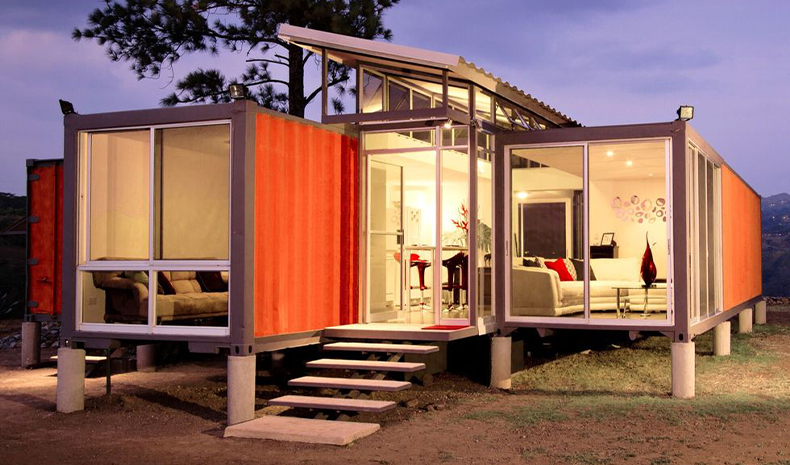
Image source: housebeautiful.com
Shipping container scraps can be turned into homes by recycling the shipping container. This is an environmentally friendly option that reduces pollution and reduces the carbon footprint caused by building new houses.
Recycled Steel
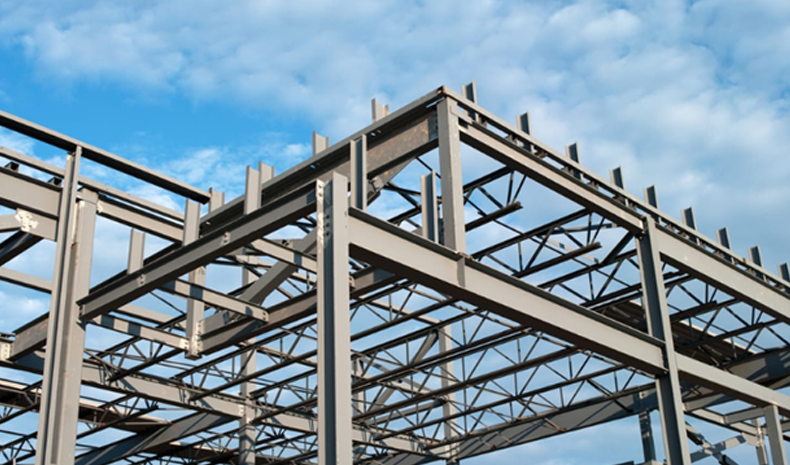
Image source: Procore
Steel is 100% recyclable, so it never loses its quality and can be used in the same or different applications as it was before. In addition, recycling steel reduces carbon emissions than when it is produced new.
Recycled Glass
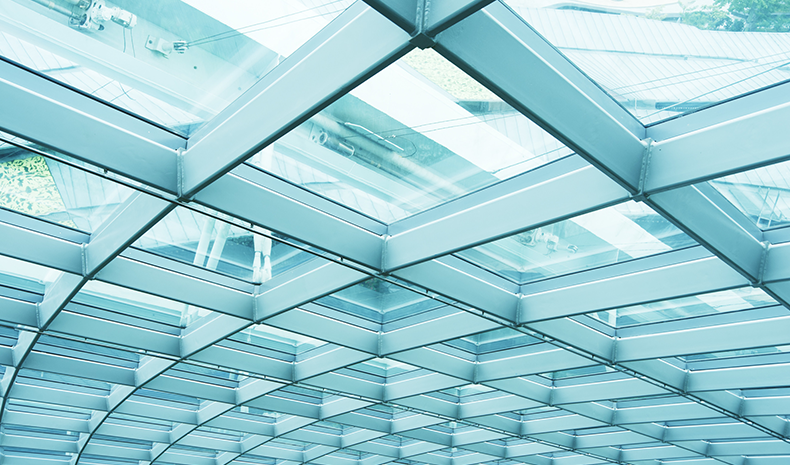
Image source: materialjourneys
Recycled glass uses up to 40% less energy than manufacturing new glass and conserves natural materials.
Ferrock
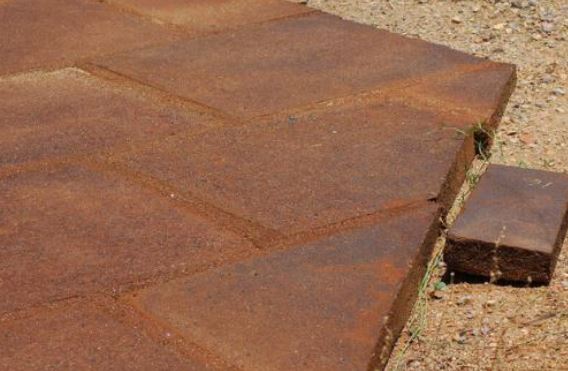
Image source: The Constructor
Ferrock is made from recycled steel dust and silica waste. These materials react with carbon dioxide to form a strong, sturdy material comparable to concrete. Ferrock is often used in walls, sidewalks, pavers, and other places you might use concrete.
Recycled Rubber
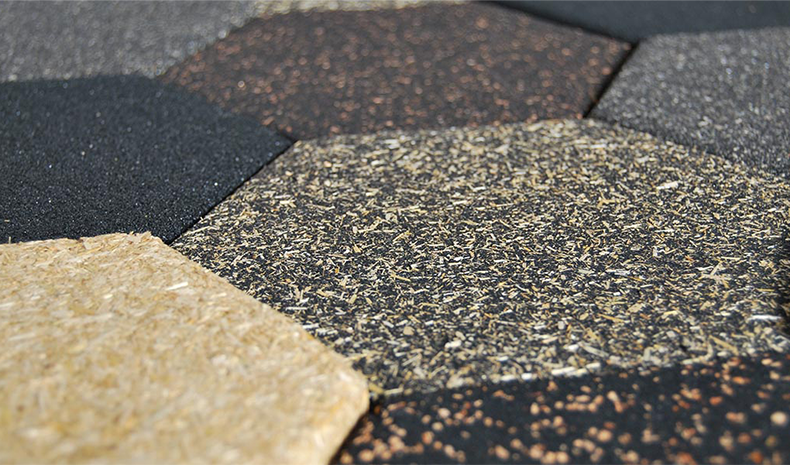
Image source: capcon.it
Producing new rubber, either natural or synthetic, is harmful to the planet and the material often ends up in landfills. Recycling rubber is a simple option to reduce the need for new rubber and reduce the environmental impact.
Plasma Rocks
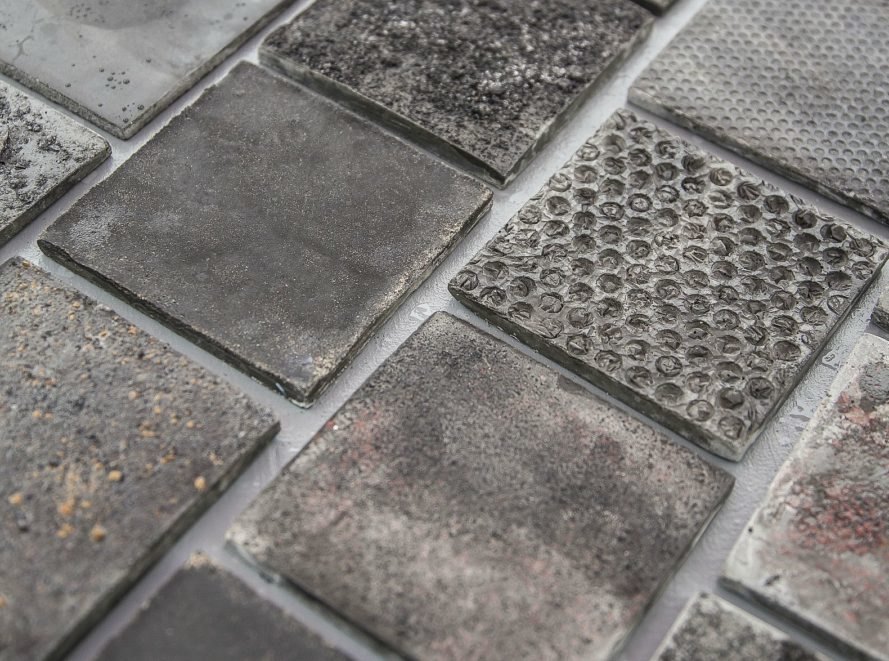
Image source: Inhabitat
This material is made from recycled waste by heating the waste at extremely high temperatures. As a result, 220 pounds of landfill waste can turn into 45 pounds of plasma rock.
Cigarette Butt Bricks
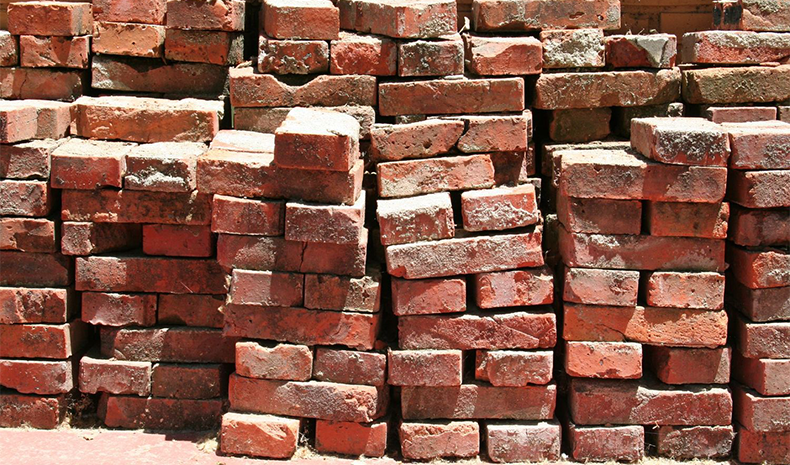
Image source: archdaily
Firing cigarette butts into bricks helps reduce the amount of pollution caused by cigarette residue. Creating bricks from cigarette butts also uses less energy than creating regular bricks and takes less time.
ByBlock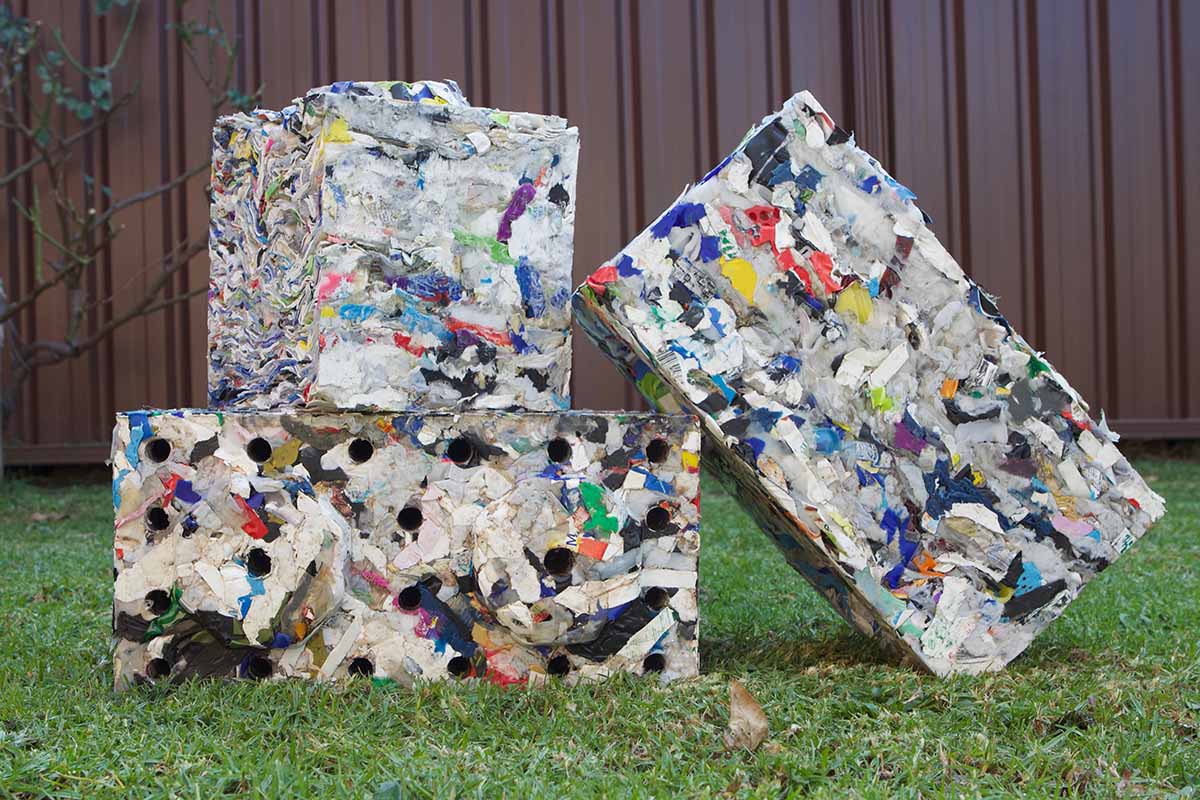
Image source: ByFusion
ByBlock is made from plastic waste, one of the biggest issues in our world today. They have a low-emission process and use minimal materials for installation. ByBlock can be used for sheds, privacy fencing, retaining walls, landscaping, and much more.
Enviro Board
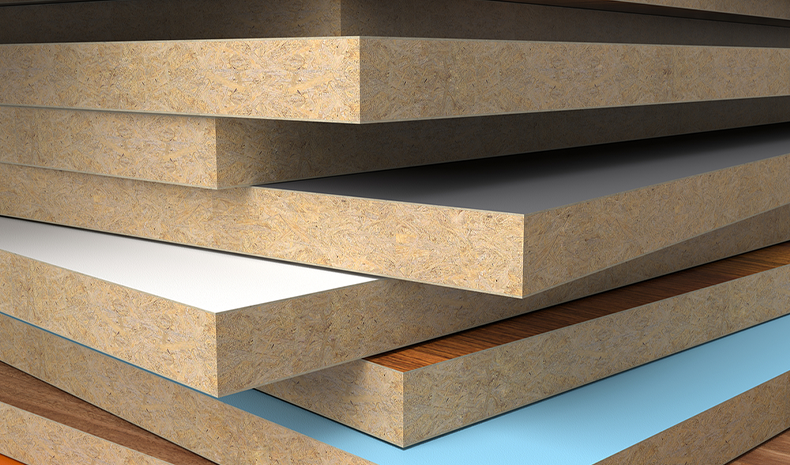
Image source: greenbiz.com
Enviro Board is made by milling agriculture waste including rice straw, wheat straw, and elephant grass into modular construction panels to be used for environmentally friendly building panels.
Newspaper Wood
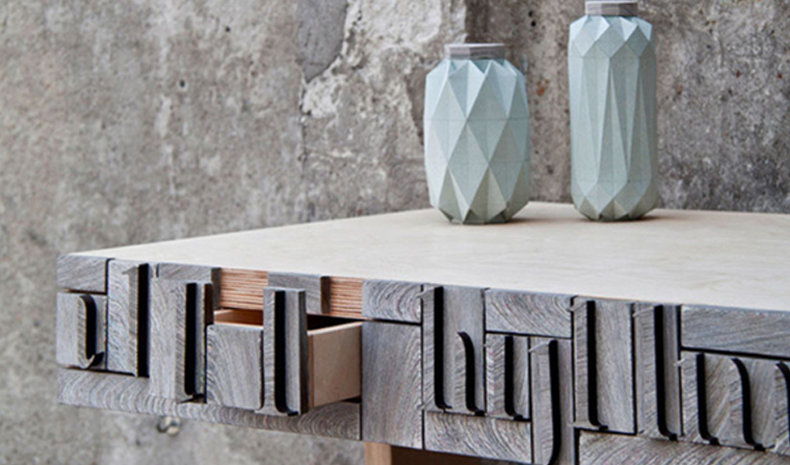
Image source: Home Design Lover
Twenty-five percent of landfill waste comes from newspapers, which is why a Dutch designer Mieke Meijer began compressing and rolling newspapers into fire logs, furniture, and home décor.
Natural Manufactured Materials
Manufactured natural materials refer to building materials made from natural raw materials but processed or manufactured in some way to make them suitable for use in construction. These materials often have improved properties or performance compared to raw materials and maybe more consistent in quality.
Unfired Clay Bricks
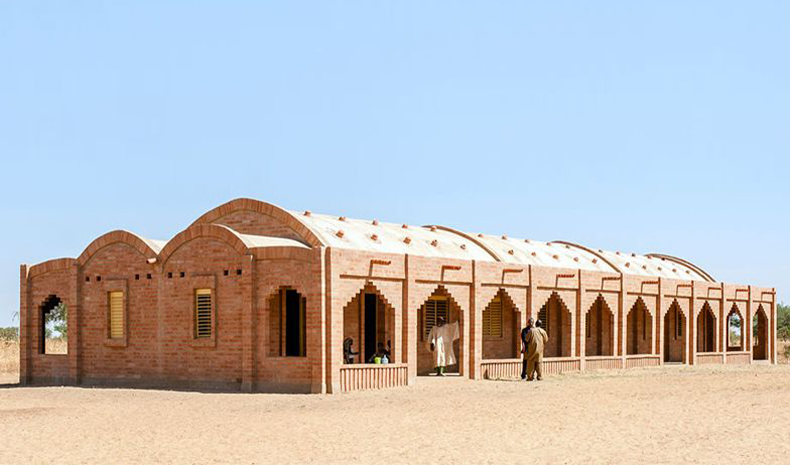
Image source: Pinterest
These bricks have a small thermal conductivity, giving them good insulation and high porosity, ultimately reducing electricity costs for heating and air conditioning.
Cob
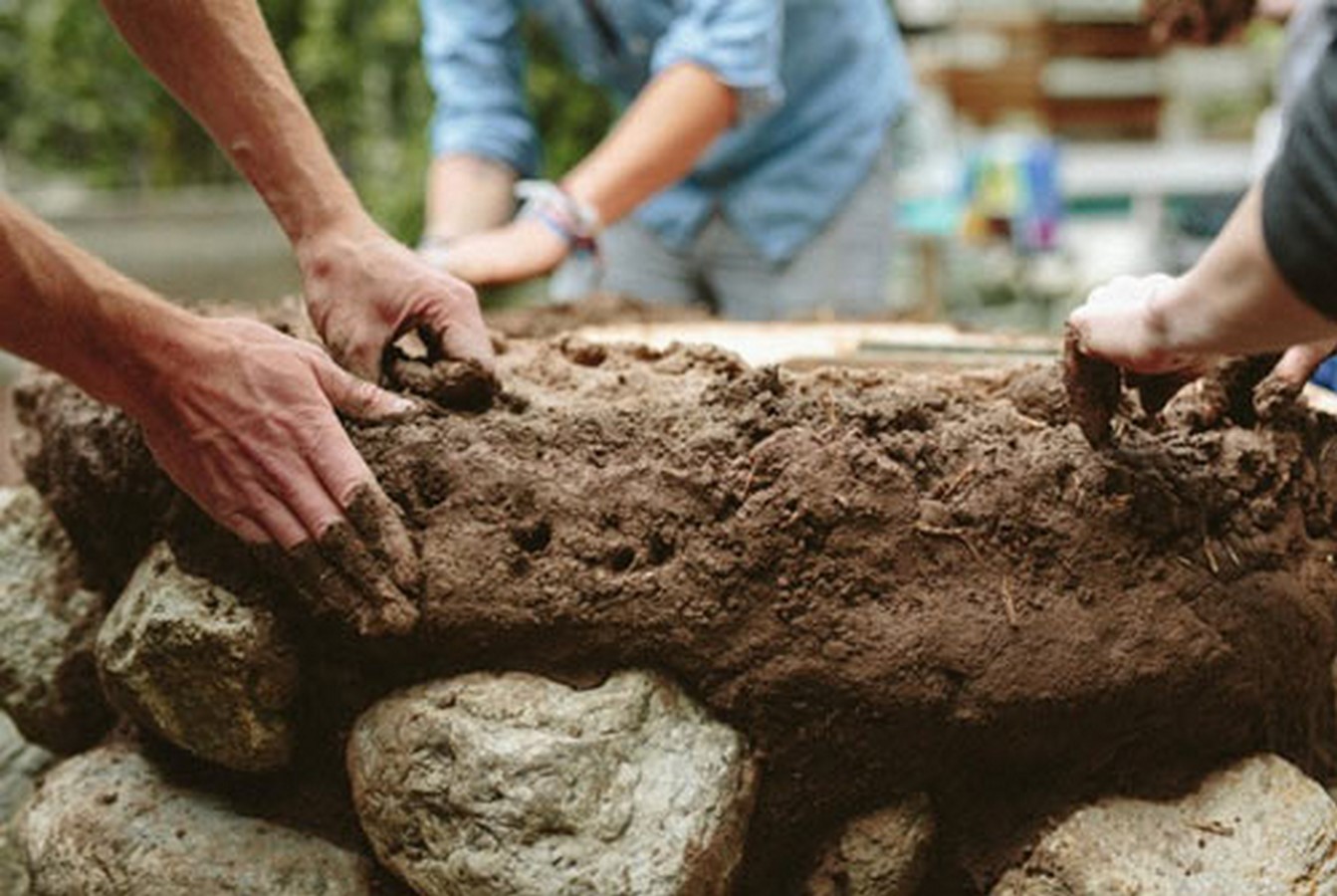
Image source: Rethinking The Future
Cob is a building material made from a mixture of clay, sand, and straw. When mixed with water, they can be used to construct durable walls with no synthetic materials. It also functions as a natural thermal regulation and is highly durable to withstand extreme conditions.
Rammed Earth
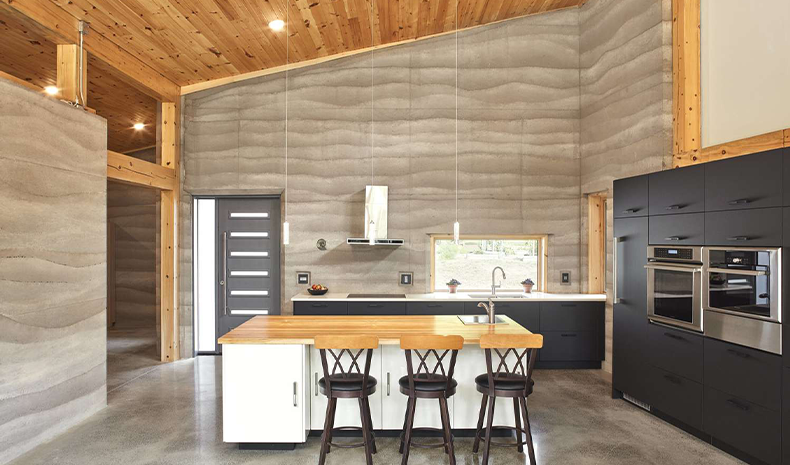
Image source: Treehugger
Rammed earth has a high thermal mass, so the energy demand of buildings and the transportation of materials is low. Rammed earth also uses locally sourced materials and is more environmentally friendly than other chemicals and cement.
Cordwood
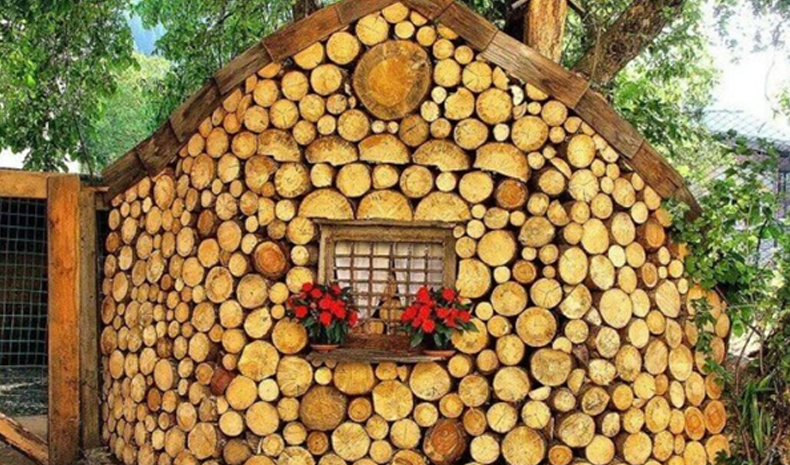
Image source: Insleading
Cordwood is made from indigenous materials and some construction waste like wood and sawdust. It’s used in building styles like round or curved-wall buildings and stack wall corners with benefits ranging from energy efficiency to ease of construction.
Clay Brick
Image source: worldarchitecture
Made from natural resources, clay brick is 100% recyclable and is one of the most cost-effective sustainable materials. These handmade bricks are used in a variety of common applications including roofs, terraces, façades, and terraces, amongst others.
Terrazzo
Image source: Archdaily
Terrazzo is manufactured on-site, reducing post-commercial waste and transportation costs.
Transparent Wood
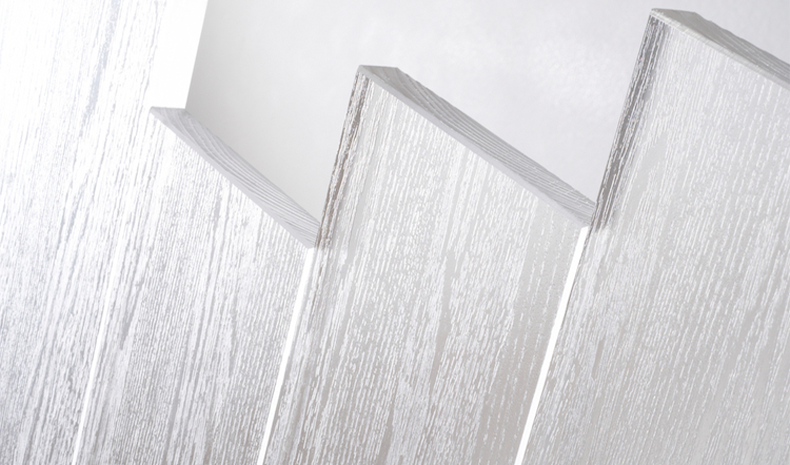
Image source: Fast Company
Transparent wood is created by soaking wood from a balsa tree in an oxidizing bath that bleaches it of visibility. It can be used in place of glass for windows making the windows more durable and helping cut energy costs.
Hydrogel
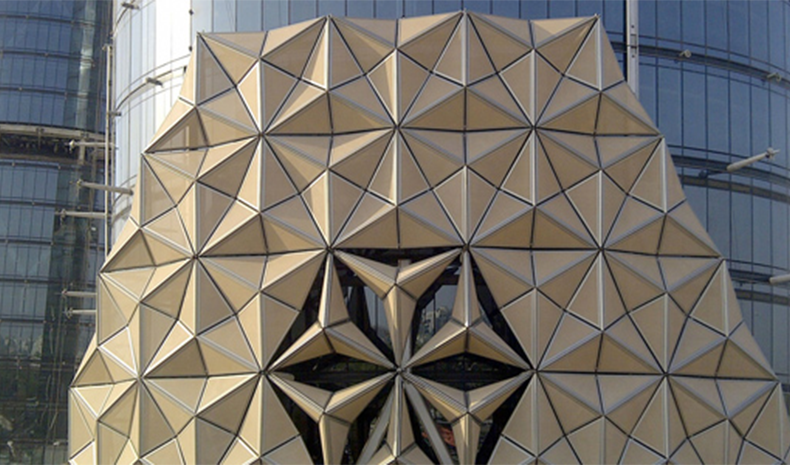
Image source: Spring Wise
Hydrogels are renewable, biodegradable, and abundant making them an eco-friendly building block. They are extremely versatile as they have been used for many different structural designs with different preparation methods.
Wood Shakes and Shingles
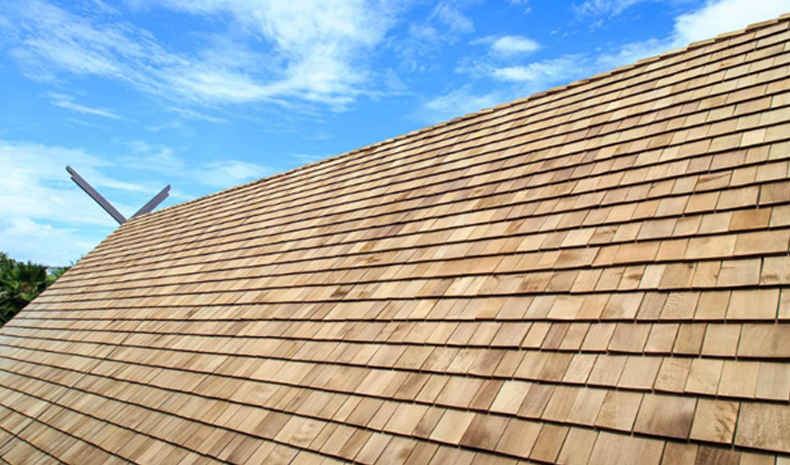
Image source: Advantage Construction
As long as the wood is sustainably harvested, these materials are likely one of the only sustainable roofing materials out there. Though shakes and shingles are less durable than slate and clay tiles, wood is biodegradable, and many areas produce shakes locally.
Mass Timber
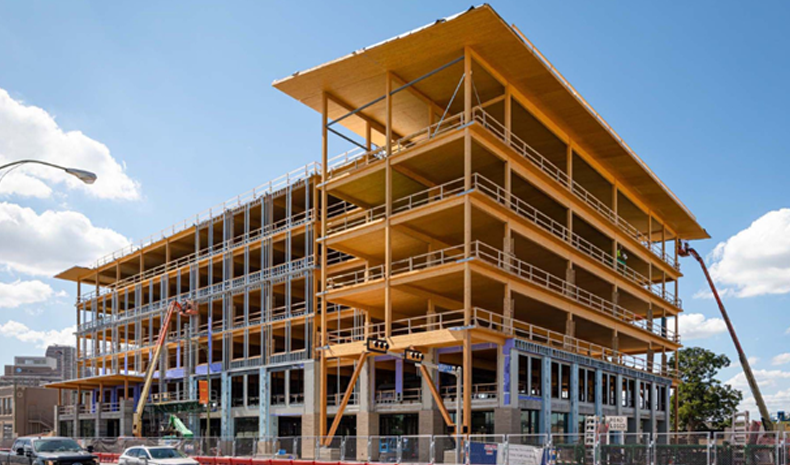
Image source: Wood Works
Buildings with mass timber leave a smaller carbon footprint than those built with concrete or steel. They also produce less waste and can reduce construction time by 61 percent.
Earth Bags
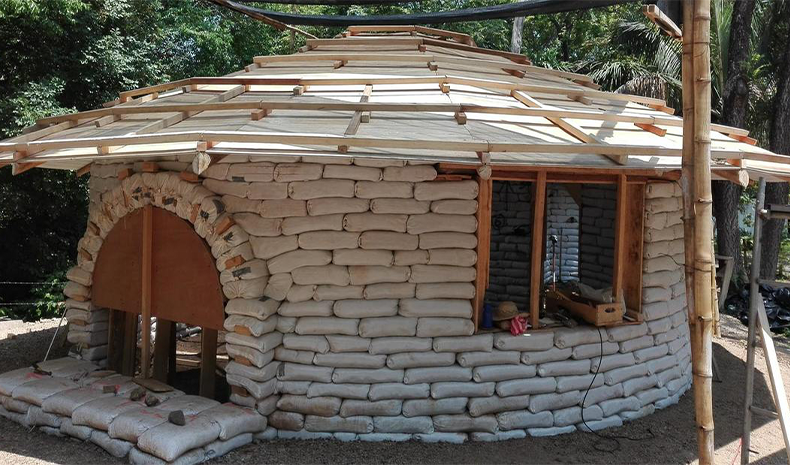
Image source: homedit
Earth bags are stronger, cheaper, and less harmful to the environment than building techniques using brick or cement. They are safe and cost-effective by using just regular soil.
Mycelium
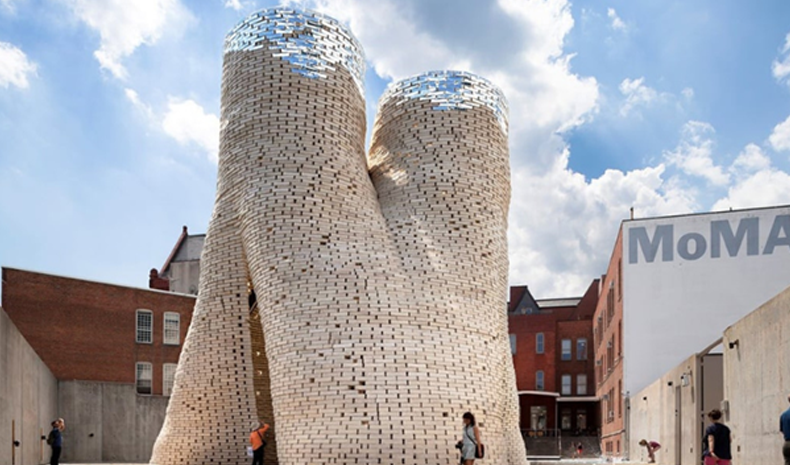
Image source: Certified Energy
This mushroom-based building material grows quickly and easily and can be used to sustainably create fabrics, bricks, insulation, and more.
Plant-Based Polyurethane Rigid Foam
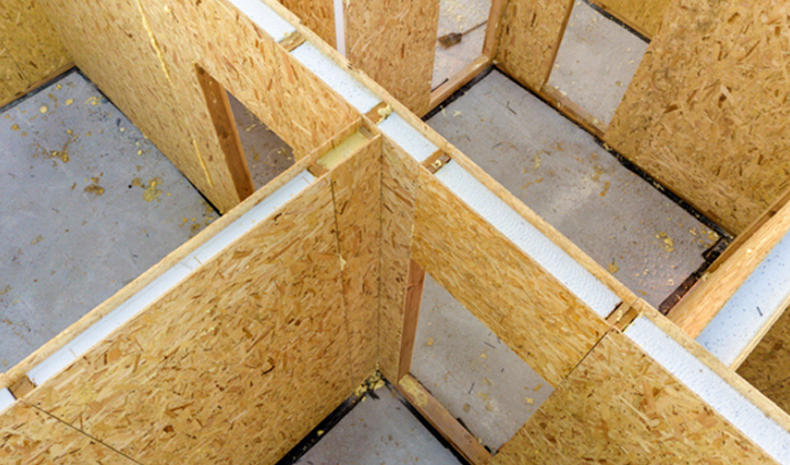
Image source: Linden Industries
This kind of rigid foam is easy to produce and process and uses less energy during manufacturing. Other kinds of rigid foams use plastics that are very difficult to dispose of, making plant-based polyurethane rigid foams favorable over other options.
Concrete Type Materials
Concrete is a versatile and widely used construction material that is made from a mixture of cement, water, and aggregate. It is known for its durability, strength, and ability to be formed into a variety of shapes and sizes.
Different variations of concrete are designed for specific applications and have specific properties that can make them more sustainable and suitable for different types of construction projects.
TimberCrete
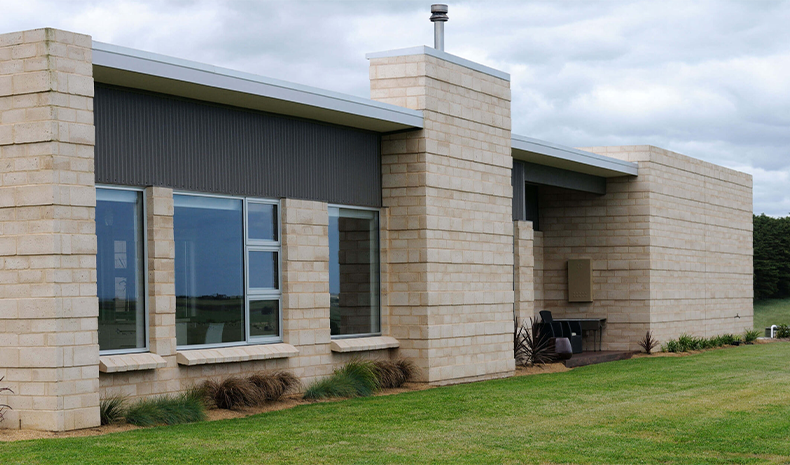
Image source: Timbercrete
TimberCrete is made from sawdust and small wood chips, a byproduct of the timber industry that would otherwise go to waste. TimberCrete uses much less material to produce, reducing its environmental impact.
Hempcrete
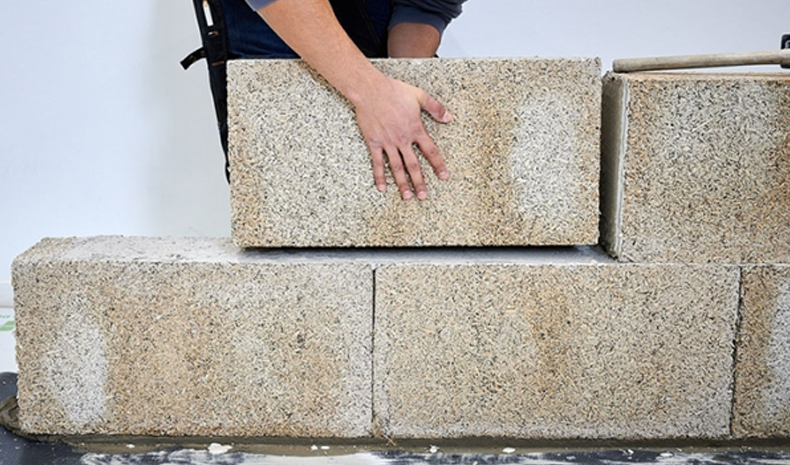
Image source: Iso Hemp
Hempcrete comes from small pieces of wood found on the stalk of the hemp plant called hemp shives. These are then mixed with lime or mud cement to create a lightweight and non-structural material that can be combined with traditional building systems.
AshCrete
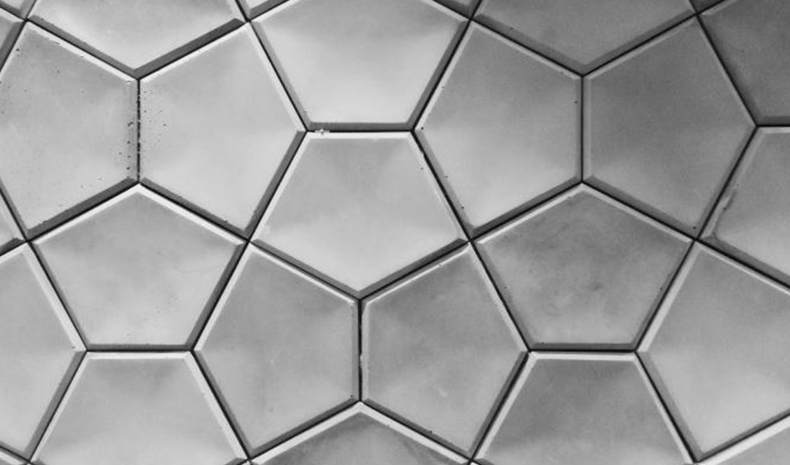
Image source: Beyond Homes
Similar to Hempcrete, Ashcrete is made by mixing fly ash with lime and water to make a strong material similar to concrete. The use of Ashcrete reduces CO2 emissions and can replace the use of cement by 25 percent.
Super-Hydrophobic Cement
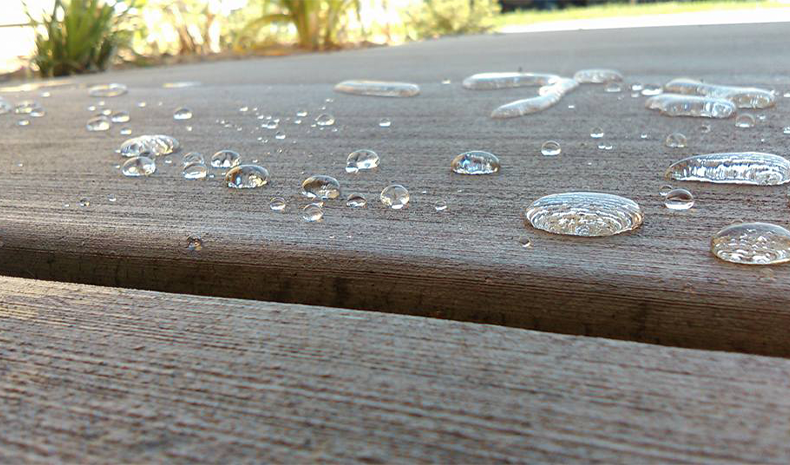
Image source: Nano Tech
This kind of cement is created by modifying the structure of cement so that it reflects light, which is more environmentally friendly than using street lights.
Bendable Concrete

Image source: The Constructor
Bendable concrete infuses CO2 into concrete to make it stronger and use less cement – one of the biggest contributors to carbon emissions.
Precast Concrete
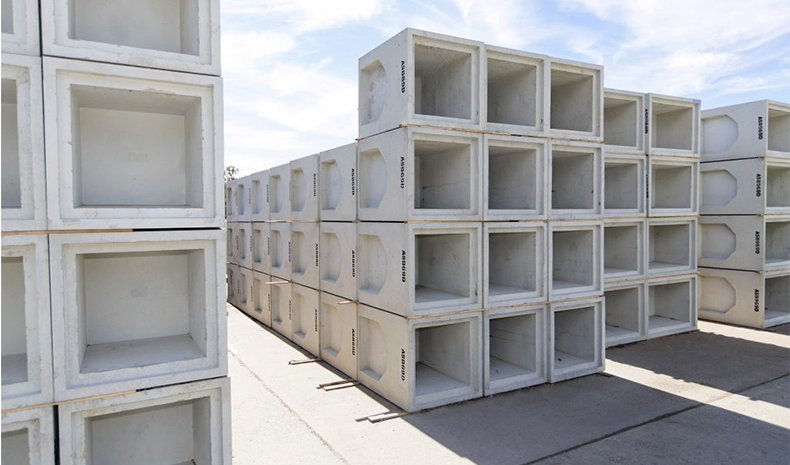
Image source: Converge.io
Precast concrete is an example of three sustainability factors: environmentally friendly, economical, and socially responsible use. They can be reused several times in different applications and can be produced locally, cutting down their carbon footprint.
Grasscrete
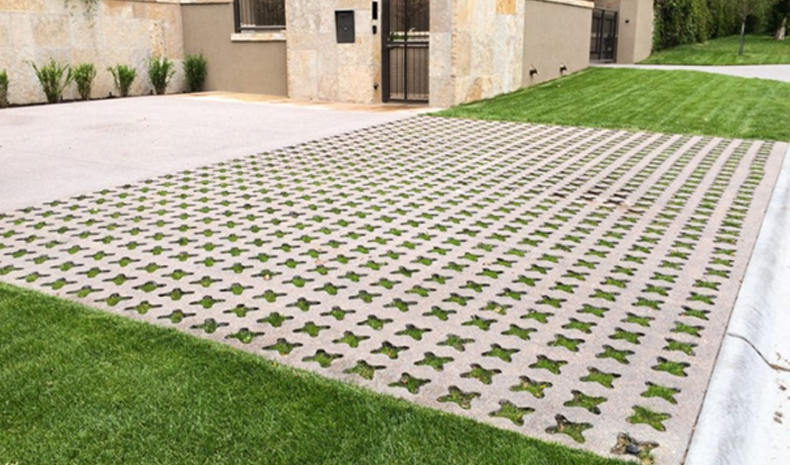
Image source: Colorado Hardscapes
Grasscrete is made from reinforced cellular cast on-site concrete that grows natural grass by filling voids with soil or stones. It has several environmental advantages including stormwater infiltration, is made from recycled materials, and increasing green space.
Self-Healing Concrete
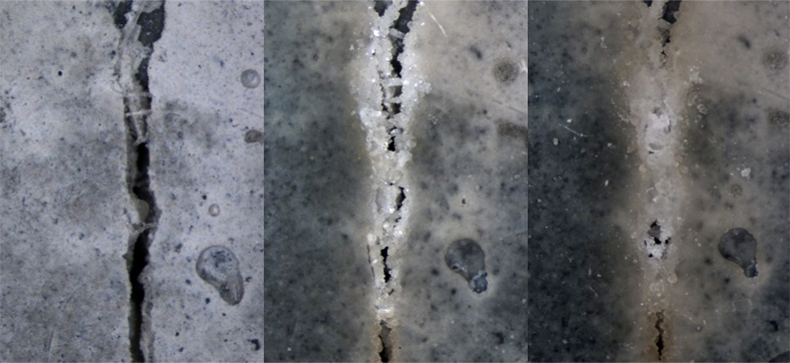
Image source: Industry Tap
This type of concrete can autonomously repair its cracks. Cracks impair the durability of concrete as they allow liquids and potentially harmful gases to pass through. Self-healing concrete would provide a longer service life for concrete structures and make them more sustainable in the process.
Insulated Concrete Forms
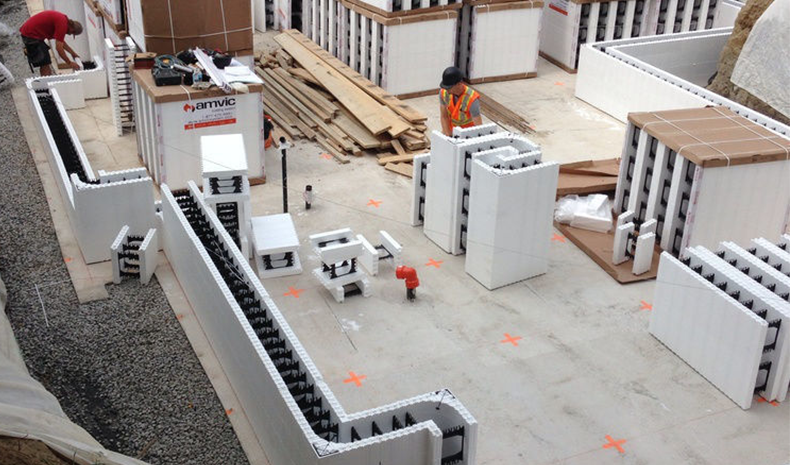
Image source: Fine Home Building
Insulated concrete forms (ICFs) do not use as many natural resources like gas, electricity, and wood and only generate 1% of construction waste.
System-Based and Technology Materials
Technology materials refer to building materials that are based on or utilize advanced technologies, such as engineered composites, nanotechnology, and smart materials. These materials can have enhanced properties or functions compared to traditional building materials and can offer a range of benefits in construction, such as improved performance, durability, sustainability, and energy efficiency.
Solar Chimney
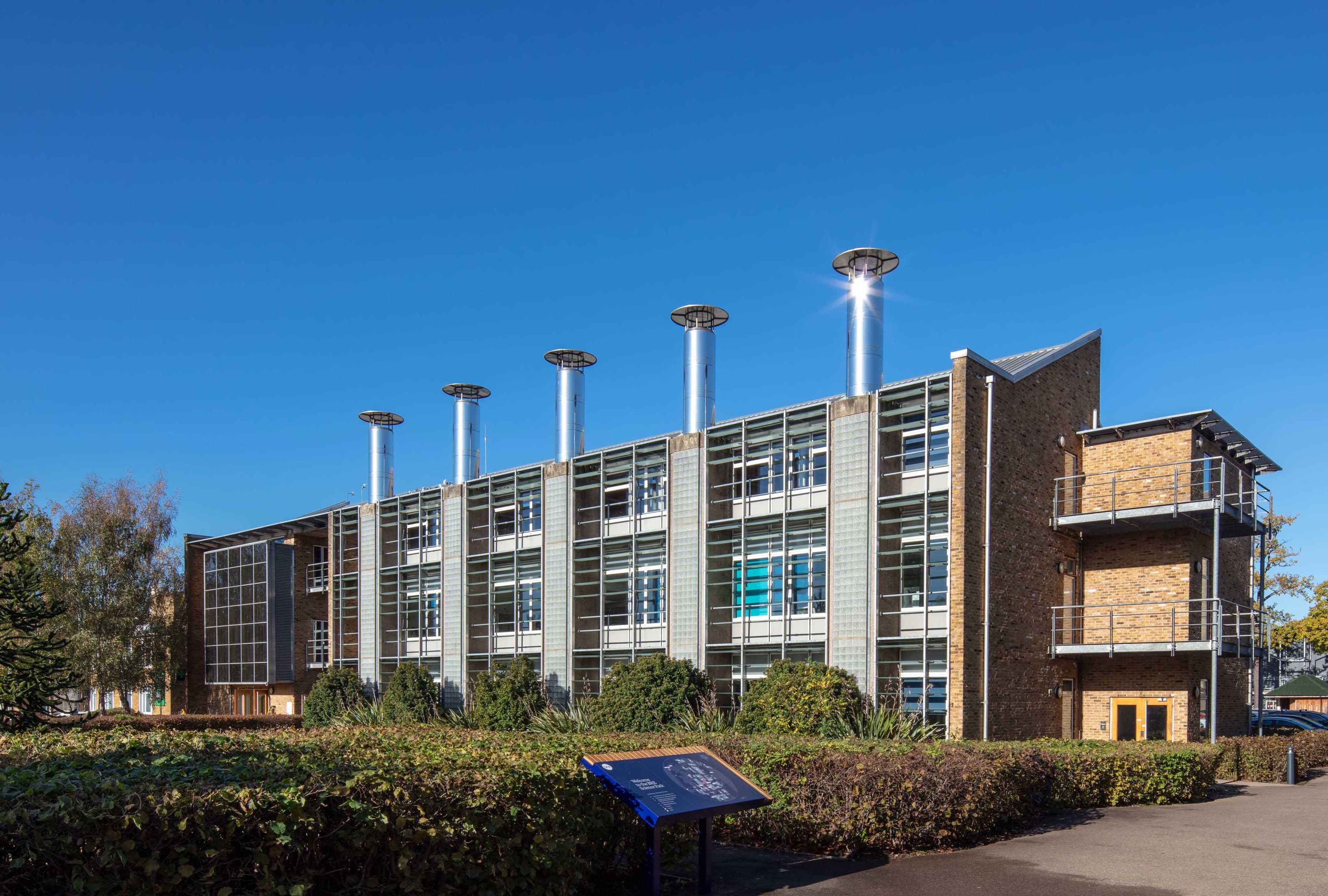
Image source: Architects Journal
Solar chimneys are passive solar heating and cooling system that regulate the temperature of a building and provide adequate ventilation.
Low-E Windows
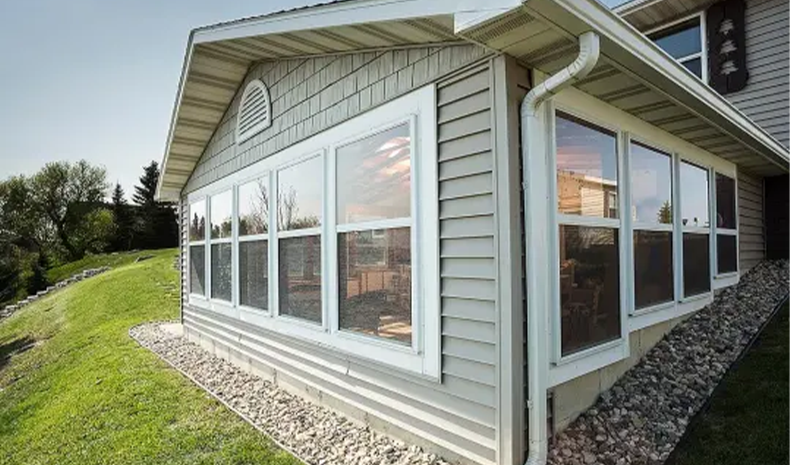
Image source: The Constructor
This type of glass controls the amount of UV light that passes through the glass and ultimately protects fabrics, paintings, pictures, and more from damaging sunlight.
Vacuum Insulation Panel
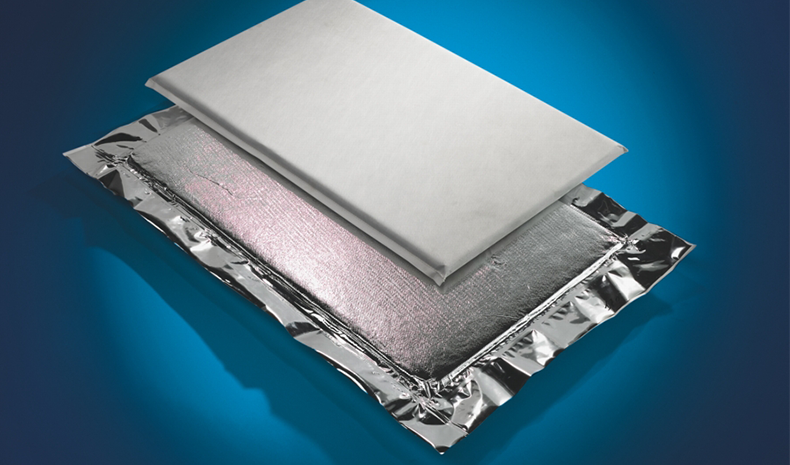
Image source: Building Green
Most vacuum-insulated panels use recycled materials to produce and are one of the best-known insulators, giving customers immense energy savings and reducing CO2 emissions.
Aluminum Foam
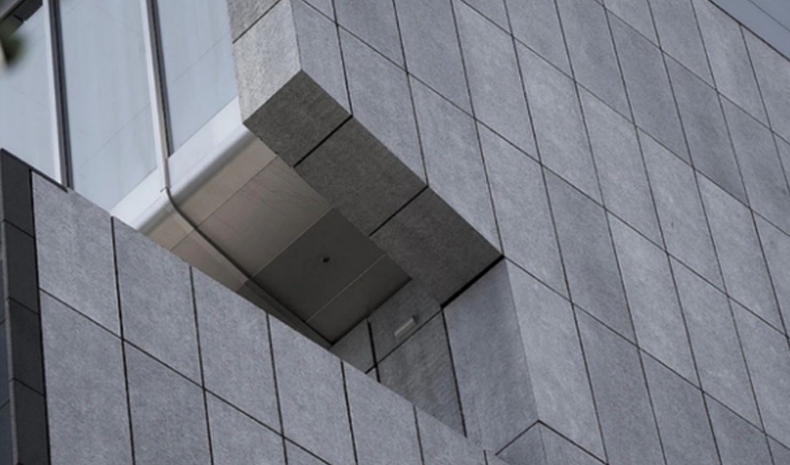
Image source: Metal Foam Web
Aluminum foam is good for sound absorption, wall cladding, ceiling tiles, lighting fixtures, and more due to its lightweight, sponge-like appearance. It is made from recycled aluminum and comes in two forms: open-cell foams and closed-cells foams.
Synthetic Spider Silk
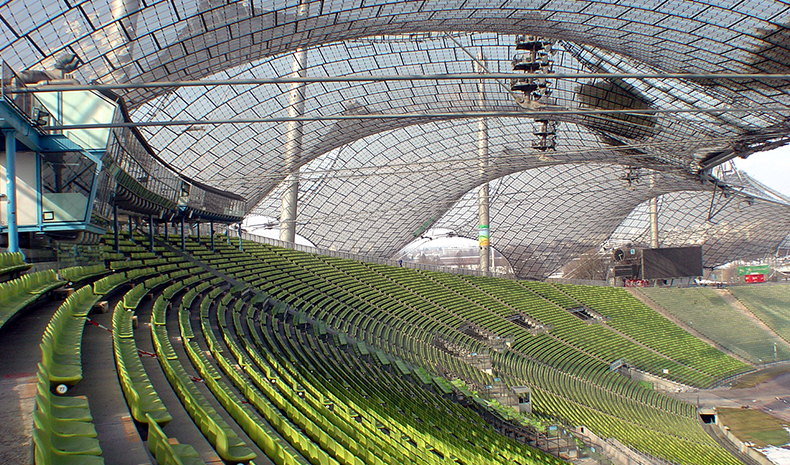
Image source: On Technology and Architecture
Synthetic spider silk has the potential to replace single-use plastic and other petroleum-based materials entirely. It can be used as door hinges or for home décor.
Breathe Bricks
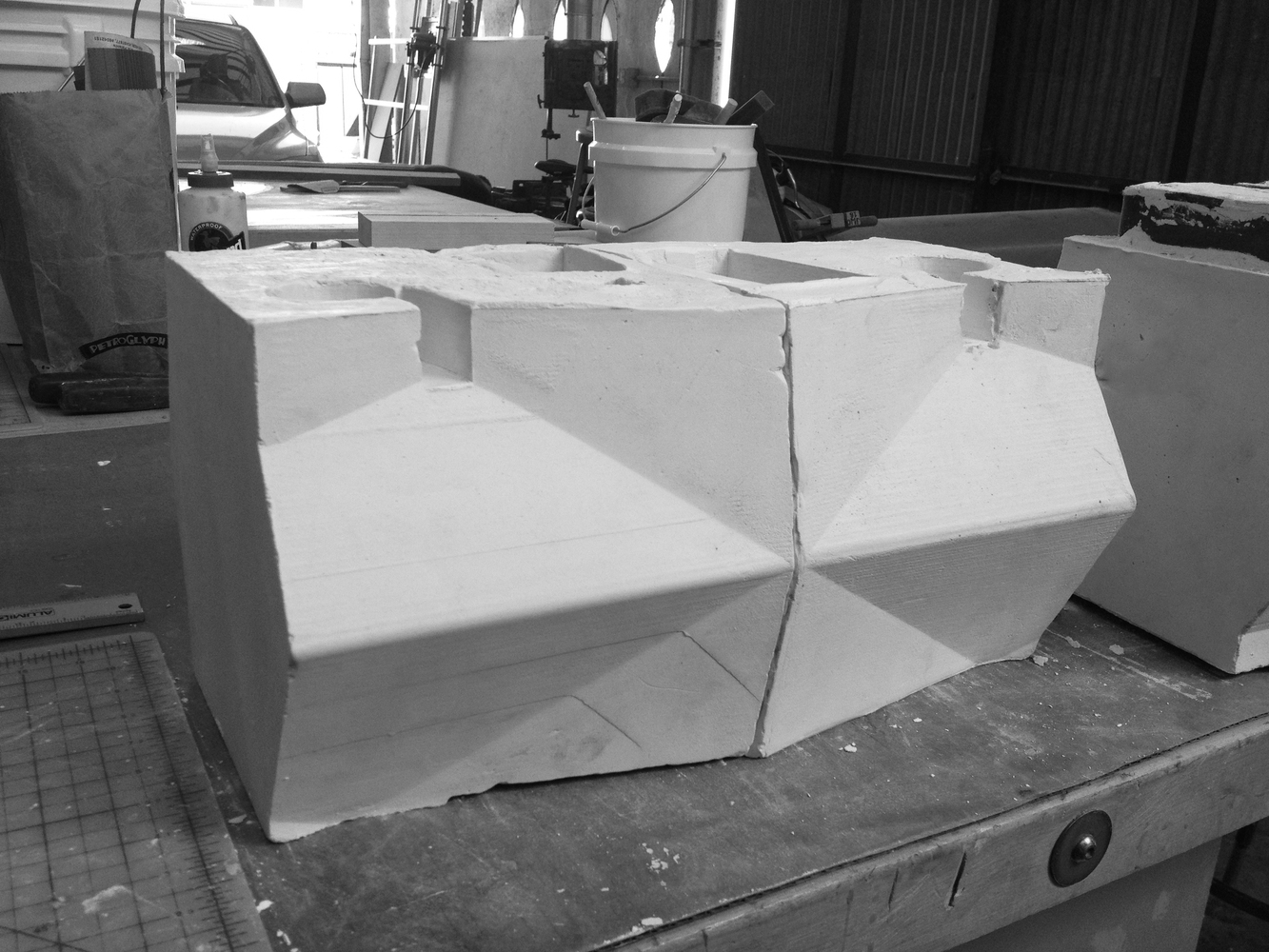 Image source: Procore
Image source: Procore
Breathe bricks filter out polluted outdoor air to improve indoor air quality. There is no external or additional filtration devices required as the air itself creates a filtration effect.
Solar Panels
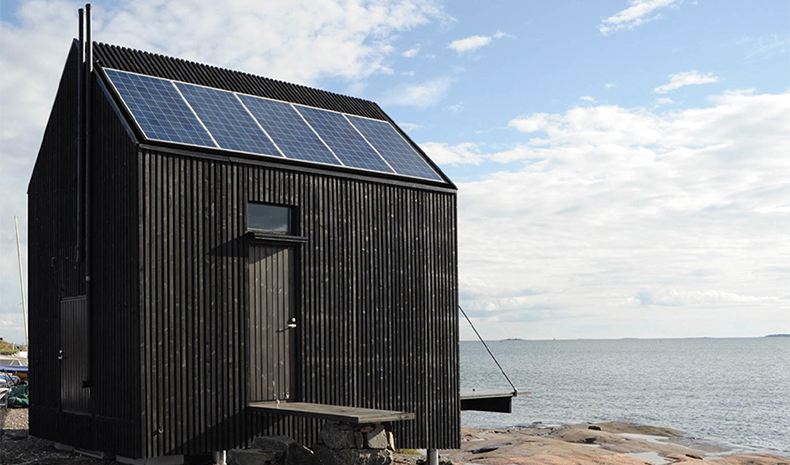
Image source: Yanko Designs
Solar panels play a critical role in reducing greenhouse gas emissions, improving air quality, and reducing water use.
Smart Glass Windows
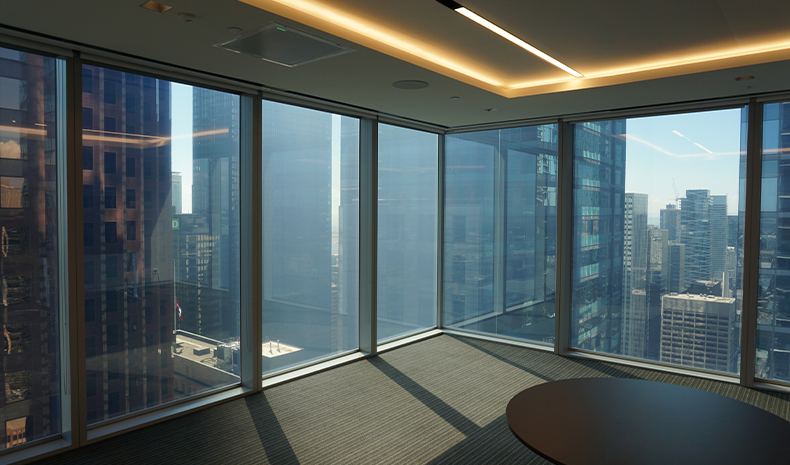
Image source: Smart Film Glass
Also known as “dynamic glass,” smart glass contains metal oxide which makes the glass’ tint level change when electricity is applied to it. A higher tint level blocks heat from entering the building while a lower tint invites heat in. This concept ultimately reduces a building’s heating and cooling needs by about 20 percent.
 Swatchbox is a premier sample fulfillment service for building product manufacturers. With proprietary software designed by insiders of the design community, Swatchbox helps manufacturers improve product sales and brand affinity by delivering material samples to the design community with speed, intelligence, and style. Learn more and join Swatchbox at www.swatchbox.com.
Swatchbox is a premier sample fulfillment service for building product manufacturers. With proprietary software designed by insiders of the design community, Swatchbox helps manufacturers improve product sales and brand affinity by delivering material samples to the design community with speed, intelligence, and style. Learn more and join Swatchbox at www.swatchbox.com.



